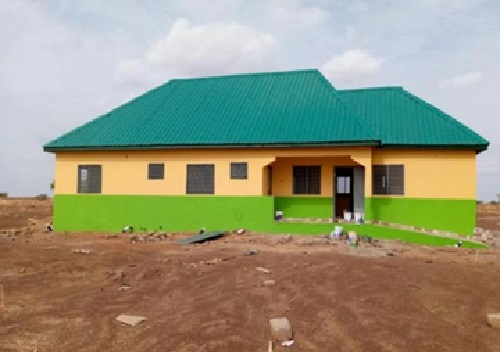A completed CHPS Compound at Tiakaso in the Chereponi District
The North East Regional Coordinator of the Northern Development Authority (NDA), Issah Salifu Musah, has disclosed that since 2017, the authority has rolled-out a total of 191 infrastructural projects, under the Infrastructure for Poverty Eradication Programme (IPEP).
He said out of the total, 104 have so far been completed and handed over to beneficiary communities.
According to him, a unique feature of the roll-out of the IPEP was the adoption of the bottom-up approach, which underscores the significance of the projects for the people in the beneficiary communities, and expressed the hope that, they will do whatever it takes to ensure the facilities stand the test of time.
He indicated that these massive investments in the Constituencies are a manifestation of the government’s commitment to providing the basic social needs of the people in other to improve their living conditions.
Mr. Musah said, to further deepen the NDA’s resolve to play a leading role in the development space in the Northern Savannah Ecological Zone (NSEZ), which encompasses the five operational regions of the NDA, a stakeholder mapping exercise has been initiated to enable the Authority compile data on all key stakeholders operating in the zone.
It is to ensure the effective roll-out of its Medium-Term Development Strategy (MTDS), which was launched by Vice President Dr. Mahamudu Bawumia.
He noted that the on-going projects are at various stages of completion and assured that the authority is working tirelessly to complete them.
IPEP is a special government flagship programme aimed at prioritizing the development of communities, with the allocation of $1million per constituency to fund selected development projects.
The IPEP was preceded by the conduct of a region-wide needs assessment exercise to afford beneficiary communities the opportunity to determine their priority needs, which subsequently resulted in the construction of school blocks and classroom furniture, rural clinics and accommodation facilities for health personnel, re-shaping of feeder roads to facilitate the movement of farm produce, electrification poles, tractors and accessories, boreholes, institutional toilet facilities, among others.
By Eric Kombat, Nalerigu


